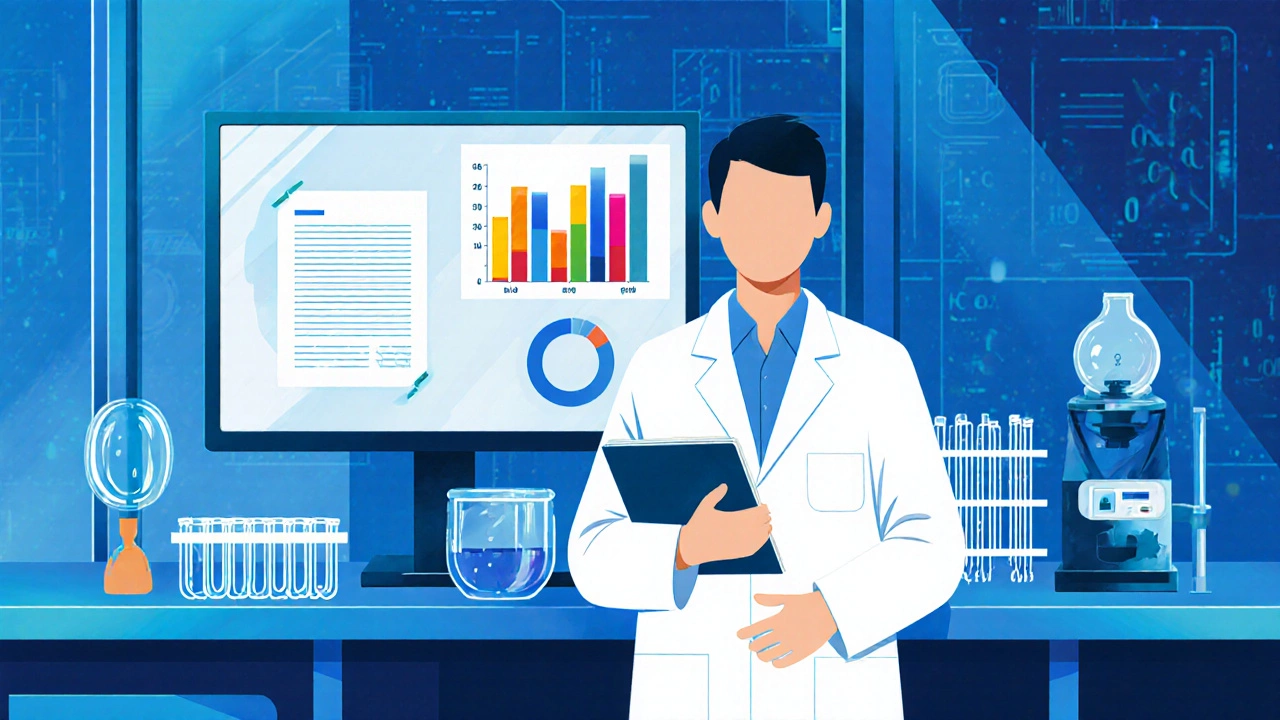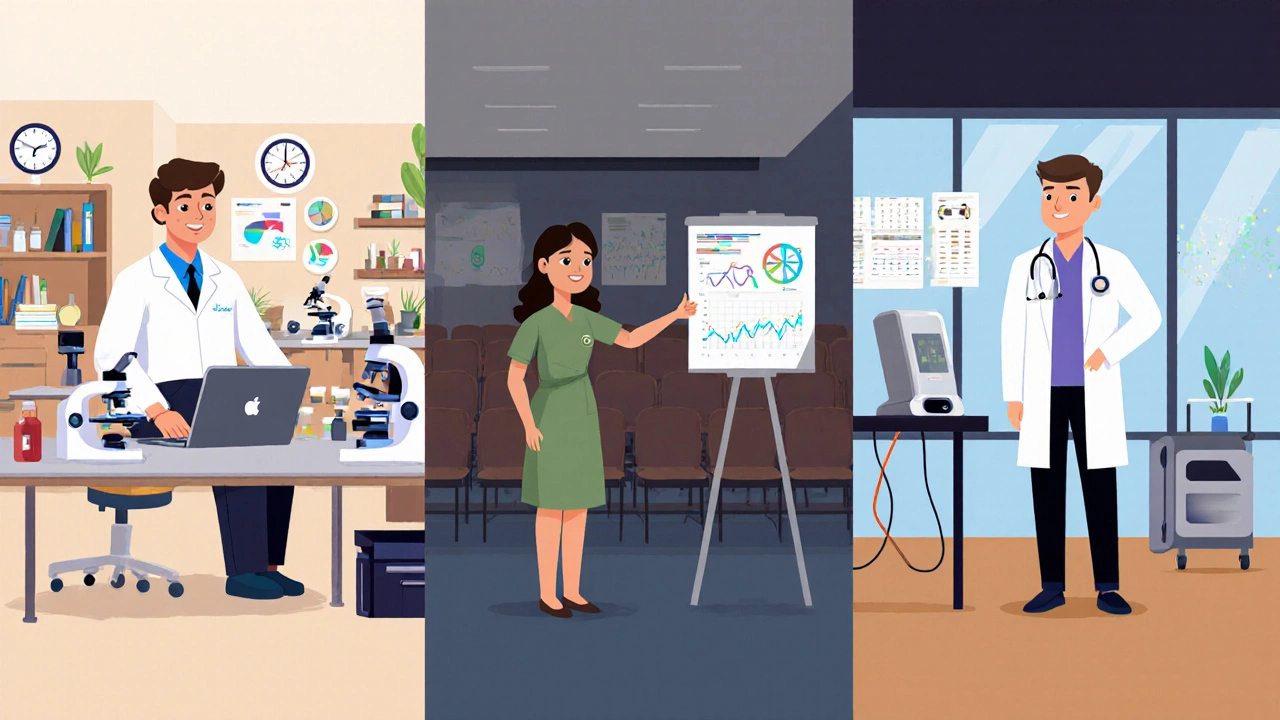How Long Does It Take to Become a Medical Scientist? Timeline & Steps
 Oct, 18 2025
Oct, 18 2025
Medical Scientist Timeline Calculator
Calculate Your Career Path
Select your current educational status to see your potential timeline to become a medical scientist.
Your Career Timeline
When people talk about a Medical Scientist is a professional who conducts research to improve human health, often bridging the gap between laboratory discoveries and clinical applications, the first question is usually: how long does the journey actually take? Below you’ll find a step‑by‑step roadmap that covers the most common routes, typical duration, and the key milestones you’ll hit along the way.
Typical time span from school to independent researcher
The average pathway in the UK and many other high‑income countries runs roughly 9-12 years after secondary school. That range reflects three major phases: undergraduate study (3‑4 years), graduate research (1‑5 years depending on the route), and post‑doctoral or senior‑level training (2‑4 years). Each phase can be shortened or extended based on scholarships, part‑time study, or research interruptions.
Step 1 - Undergraduate foundation (3‑4 years)
Most aspiring medical scientists start with a BSc in a life‑science discipline. Popular choices include Biomedical Science, Biochemistry, Molecular Biology, or even Computer Science for bio‑informatics tracks. A strong GPA, laboratory placements, and early research projects are essential because they set the stage for graduate‑level funding.
Step 2 - Optional master’s degree (1‑2 years)
While a master’s isn’t strictly required, an MSc gives you deeper subject knowledge and often includes a research thesis that can be turned into a PhD proposal. Programs such as an MSc in Clinical Research or Translational Medicine are especially valuable if you plan to work on human studies later.
Step 3 - Doctor of Philosophy (PhD) (3‑4 years)
The PhD is the core credential for a medical scientist career. Funding bodies like UK Research and Innovation (UKRI) or the National Institute for Health Research (NIHR) typically cover tuition and a stipend for up to four years. Your PhD will involve original research, publications in peer‑reviewed journals, and often a few months of teaching or mentorship experience.

Alternative pathways
Not every medical scientist follows the straight BSc → PhD route. Here are the most common alternatives:
- MD/PhD combined programs: Ten‑year programmes that grant both a medical licence and a research doctorate. They are intense but produce clinicians who can run their own trials.
- Professional Doctorates (e.g., DClinSci): Designed for clinicians who want research skills without a full PhD. Typically 2‑3 years after the MD.
- Industry research scientist: Companies may hire BSc or MSc graduates directly into R&D labs. Advancement to senior scientist roles usually requires a PhD later on.
Step 4 - Post‑doctoral training (2‑3 years)
After the PhD, most researchers take a post‑doc position to gain independence. During this time you’ll lead small projects, write grant applications, and build a publication record. Successful post‑docs often transition to lecturer, senior researcher, or industry R&D manager roles.
Professional accreditation and career progression
In the UK, the Society for Academic Primary Care (SAPC) and the British Association of Clinical Scientists (BACS) offer membership that signals competence. While not legally required, these credentials improve hiring prospects and can be essential for leading clinical trials.
Funding landscape
Securing grants is a skill in itself. Early‑career funding streams include:
- UKRI Doctoral Training Partnerships (DTP) - covers full PhD costs.
- NIHR Early‑Career Researcher Awards - up to £150 k for independent projects.
- Wellcome Trust PhD studentships - highly competitive, often tied to specific institutes.
Understanding the eligibility criteria and aligning your research proposal with national health priorities (e.g., cancer, neurodegeneration) dramatically boosts success rates.

Real‑life timeline examples
Consider three typical profiles:
- Alex (BSc → PhD): Finished secondary school at 18, completed a 4‑year BSc in Biomedical Science, then a 4‑year funded PhD. By 26, Alex started a 2‑year post‑doc and is now a senior research associate.
- Priya (MSc → PhD): Took a 1‑year MSc in Clinical Research after a 3‑year BSc, then a 3‑year PhD. Total time: 7 years, plus a 2‑year post‑doc, making her 27 when she lands a lecturer position.
- James (MD/PhD): Enrolled in a 10‑year MD/PhD programme straight after school. He earned his MD at 28 and PhD at 30, then did a 3‑year clinical research fellowship. By 33 he leads a translational lab within a teaching hospital.
All three routes end up with a comparable level of expertise, but the MD/PhD path adds clinical licensure, which can be a decisive factor for certain research environments.
Key takeaways
- Typical total time from school to independent researcher: 9‑12 years.
- Core route: 4‑year BSc → 3‑4‑year PhD → 2‑3‑year post‑doc.
- Master’s degree can shorten the PhD by clarifying research focus.
- MD/PhD programs add 4‑6 years but grant clinical authority.
- Early‑career funding (UKRI, NIHR, Wellcome) is crucial for covering study costs and living expenses.
Comparison of common pathways
| Route | Typical total years | Main degree(s) | Typical entry age |
|---|---|---|---|
| Direct BSc → PhD | 9‑10 | BSc (4), PhD (4‑5) | 18‑19 |
| MSc → PhD | 8‑9 | BSc (3‑4), MSc (1‑2), PhD (3‑4) | 19‑20 |
| MD/PhD combined | 11‑13 | MD (5‑6), PhD (4‑5) | 18‑19 |
| Professional Doctorate (DClinSci) | 9‑10 | MD (5‑6), DClinSci (2‑3) | 22‑23 |
| Industry R&D (BSc/MSc) | 7‑8 | BSc (4), MSc (1‑2) | 18‑19 |
Frequently Asked Questions
Do I need a PhD to call myself a medical scientist?
Most research institutions require a doctoral degree for independent projects, but some industry labs accept MSc‑level scientists who specialize in technique‑focused roles.
Can I start a research career with a 2‑year master’s?
A master’s can land you junior research positions, especially in applied fields like clinical trials, but progression to senior scientist or principal investigator usually demands a PhD.
What’s the typical salary after the PhD?
In the UK, post‑doctoral salaries range from £33,000 to £45,000 per year, depending on the institution and grant source. Senior research scientists can earn £60,000 +.
How important are publications for career advancement?
Publications are the currency of academia. A strong first‑author paper list (3‑5 papers) before finishing the PhD significantly boosts grant success and job prospects.
Is it possible to switch from industry to academia later?
Yes, many scientists transition after gaining practical experience. Completing a part‑time PhD while working is a common route.